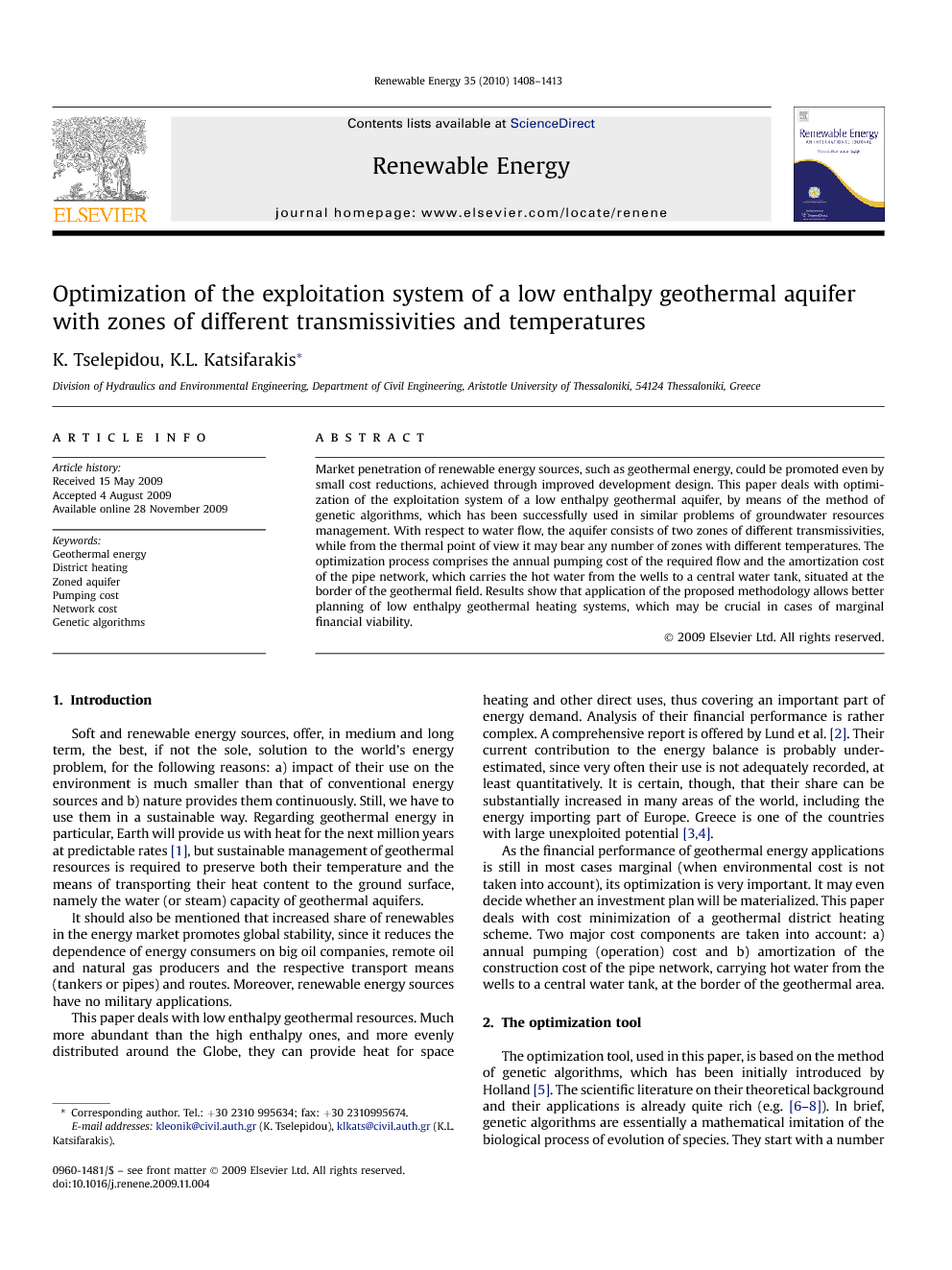ترجمه فارسی عنوان مقاله
بهینه سازی سیستم بهره برداری از آنتالپی سفره آب زمین گرمایی کم همراه با مناطق درجه حرارت مختلف
عنوان انگلیسی
Optimization of the exploitation system of a low enthalpy geothermal aquifer with zones of different transmissivities and temperatures
| کد مقاله | سال انتشار | تعداد صفحات مقاله انگلیسی |
|---|---|---|
| 20359 | 2010 | 6 صفحه PDF |
منبع

Publisher : Elsevier - Science Direct (الزویر - ساینس دایرکت)
Journal : Renewable Energy, Volume 35, Issue 7, July 2010, Pages 1408–1413
ترجمه کلمات کلیدی
انرژی زمین گرمایی -
گرمایش منطقه -
سفره آب منطقه بندی شده -
هزینه پمپاژ -
هزینه های شبکه -
الگوریتم های ژنتیکی
کلمات کلیدی انگلیسی
Geothermal energy,
District heating,
Zoned aquifer,
Pumping cost,
Network cost,
Genetic algorithms,

